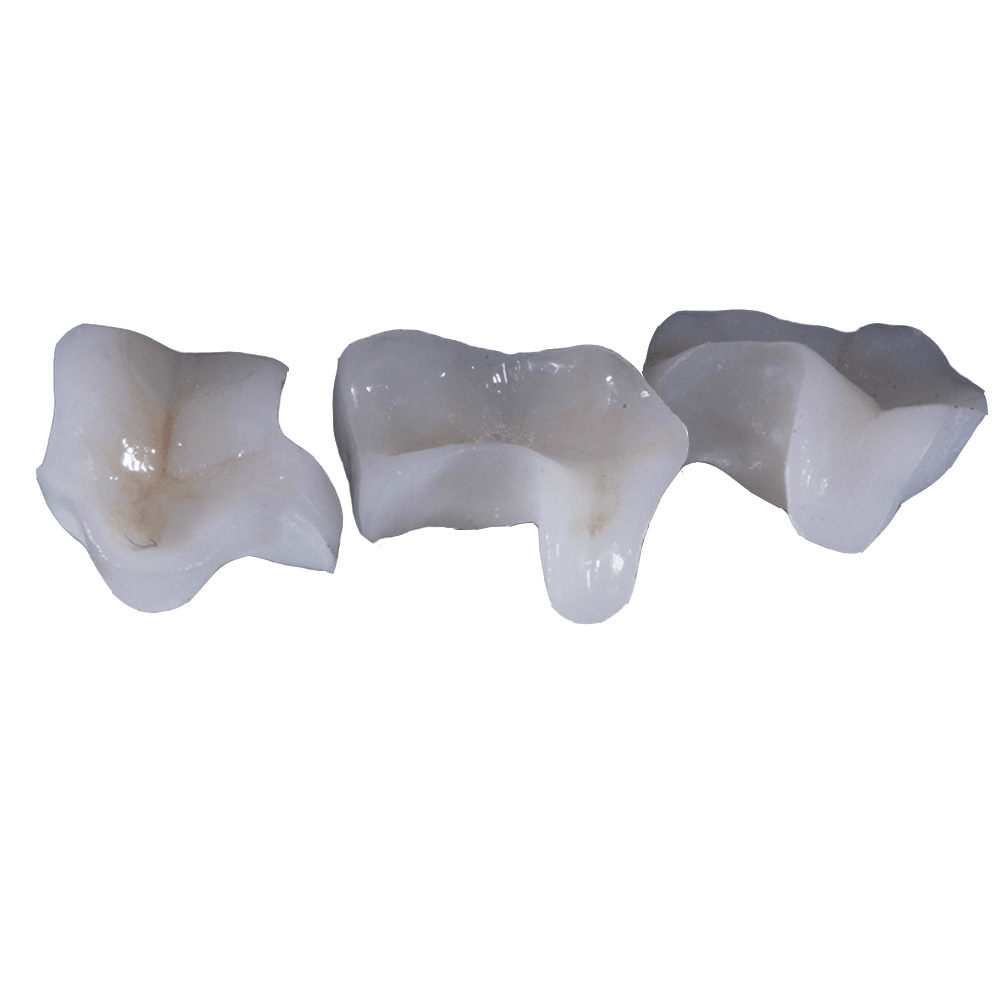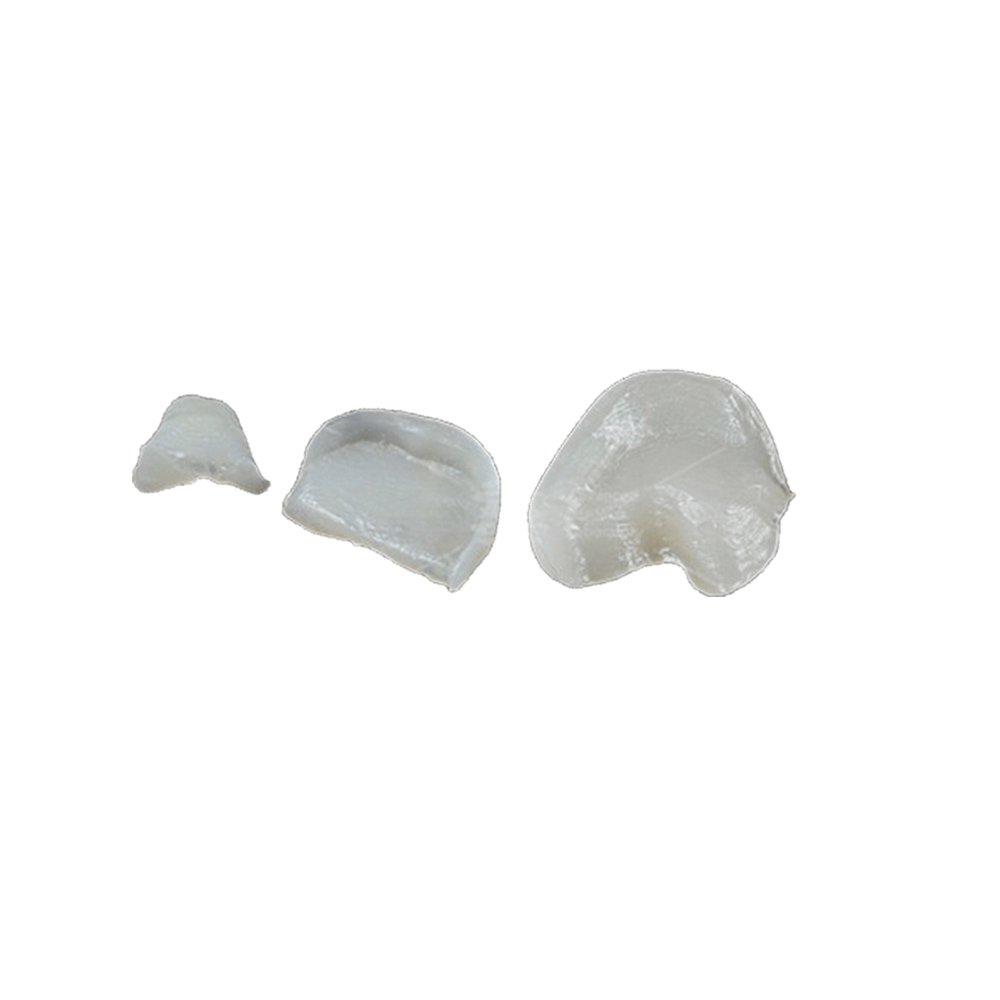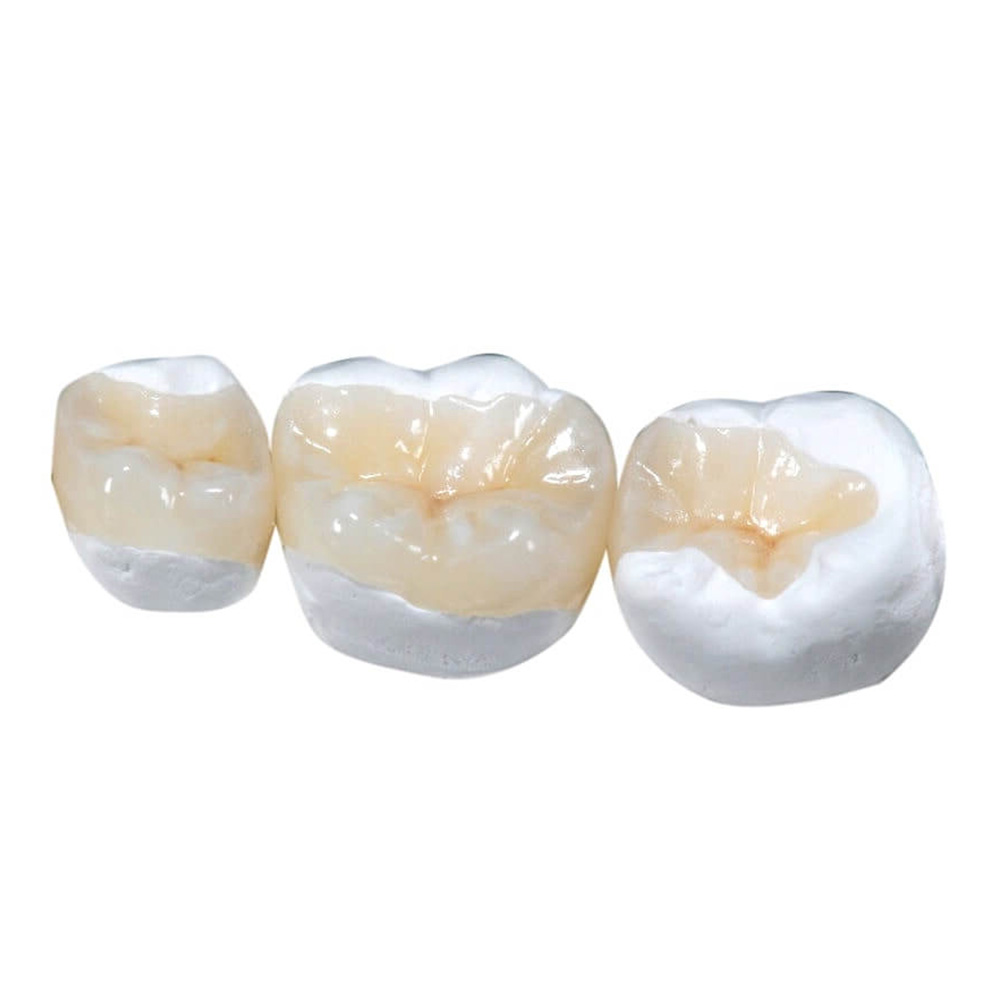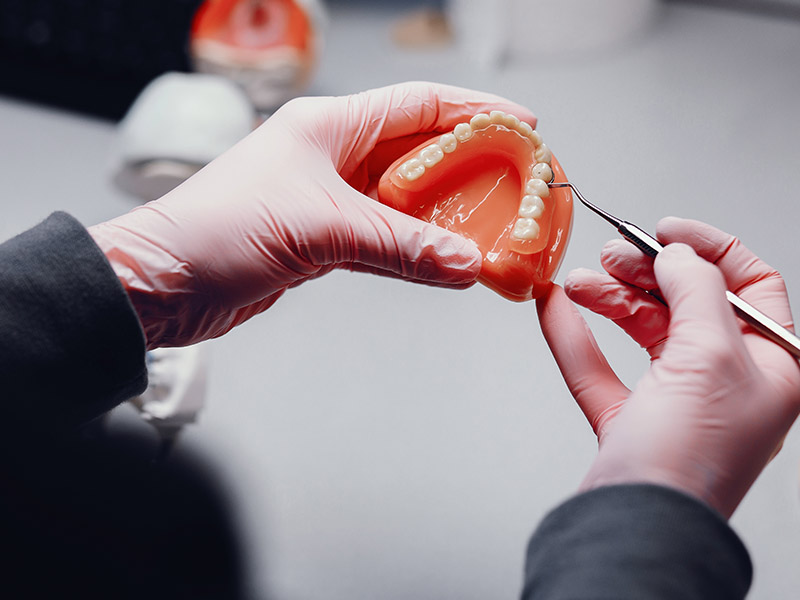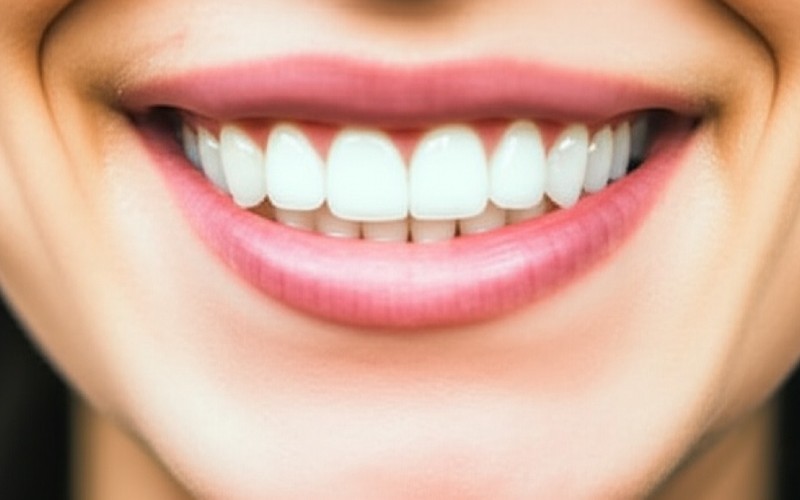Inlay and Onlay
As Istar Dental Lab, one of China’s top five dental labs, we focus on giving our partners—dentists, dental clinics, hospitals, and other labs—the latest, most accurate, and dependable dental inlays and onlays. Partner with us to get inlays and onlays made with the most advanced technology and the highest standards, with efficient turnaround and affordable prices.
The Best Partner for Your Dental Inlay and Onlay Needs
Dental inlays and onlays are a key part of dentistry that saves as much of the natural tooth as possible. They are an advanced way to fix damaged teeth. Unlike fillings that are made right in your mouth, inlays and onlays are made outside the mouth. They are carefully made in a dental lab or in the dental office using modern digital tools. An inlay fits inside the points (cusps) of a tooth and is usually for small to medium cavities. An onlay, on the other hand, covers one or more of these points. It protects a weak part of the tooth and is a middle option between an inlay and a full crown.
Why Choose Our Lab Service?
Working with us means you get the best quality and service. We help you with every step, from treatment planning to the final fit.
The best way to judge a dental repair is by how well it lasts over time. This includes how long it survives, how successful it is, and how it improves a patient’s life. Istar Dental Lab promises to make repairs that always meet or do better than these standards.
How Long They Last (Longevity and Survival Rates) Many long-term studies regularly show that these types of repairs last a very long time:
- Ceramic Inlays/Onlays: They usually last about 10 to 15 years. 10-year studies show that 92–97% of onlays that are bonded on are still in place.
- Gold Inlays/Onlays: In the past, gold repairs were known for lasting an extra-long time, often more than 15 years.
- Direct Composites (Fillings): For comparison, regular fillings usually last about 7–10 years.
Because these repairs last longer, patients need fewer replacements over the years. This is a big plus for them in the long run.
The Process from Start to Finish
Our process is simple and reliable. We make sure the flow from one idea to the next is easy to follow.
Tooth Preparation: You prepare the tooth. This includes removing the decay (caries excavation) and shaping the cavity. You will shape the proximal box and gingival floor.
Impressions: You take a dental impression of the prepared tooth. We can work with both physical molds and digital files from an intraoral scanner.
Lab Creation: This is where we work our magic! Our lab uses your impression to make the perfect inlays and onlays. We use tools like dental articulators to check the patient’s bite.
Final Placement: We send the finished piece to you. You will use luting cement or a special dental glue (adhesive bonding agent) to attach it. A curing light might be needed to harden the cement.
Choosing wisely when to use inlays and onlays is very important to make sure they last a long time. At Istar Dental Lab, we know our partners need clear instructions on when to choose them for a patient.
When to Use Them (Clinical Indications) Inlays and onlays are recommended in certain situations where a regular filling isn’t enough, but a full crown would remove too much of the healthy tooth:
- Large Cavities or Cracks: When a cavity or crack is too big for a regular filling, but there is still enough healthy tooth to avoid a full crown.
- Weakened Tooth Points (Cusps): Onlays are a great choice when one or more of the tooth’s points are weak, cracked, or have decay underneath. Studies show that onlays that fully cover weak points make the tooth much stronger and less likely to break. This is often recommended when a cavity is wider than 1/3 of the tooth’s top surface or when the remaining tooth wall is less than 2 mm thick.
- When You Need Extra Strength: For back teeth that do a lot of chewing, or for patients who grind their teeth (bruxism), these repairs are stronger and wear down less than regular fillings.
- For the Best Appearance: For patients who want a very natural-looking tooth repair, ceramic inlays and onlays have great color and look just like real teeth.
- Replacing Large Fillings That Have Failed: When a large filling fails because of new cavities, cracks, or a bad seal, an inlay or onlay can be a stronger and more tooth-saving choice than a full crown.
When NOT to Use Them (Contraindications) Even though they are useful, inlays and onlays aren’t right for every situation:
- Not Enough Healthy Tooth Left: If the tooth is too damaged, a full crown might be the only choice.
- Edges of the Repair Area Are Too Far Below the Gumline: While not impossible, edges that are deep under the gums make it hard to keep the area dry, take a good impression, and bond the piece on. This increases the risk of gum problems and leaks. Edges above the gumline are always better for gum health and are easier to work with.
- Poor Teeth Cleaning or High Risk of Cavities: Patients who don’t clean their teeth well or get a lot of cavities may not be good candidates, because new cavities around the repair are a top reason they fail.
- Not Enough Space Between Top and Bottom Teeth: If there isn’t enough room when the patient bites down, the repair can’t be made thick enough, which makes it weak.
- Uncontrolled Teeth Grinding: While onlays can handle some chewing stress, patients who grind their teeth heavily and don’t control it may need other treatments or things like a nightguard.
Materials and Technology
Choosing the right material for a repair is a very important choice. You have to think about strength, looks, and how well the material works with the body long-term. Istar Dental Lab uses a wide variety of modern materials, and each one has its own features.
Types of Materials and Their Features
- Gold Alloys: Used for a long time, gold inlays and onlays are very safe for the body, wear down at the same rate as other teeth, and fit perfectly at the edges because they can be shaped easily. They are very strong but don’t look natural, so they are not used as much today because of cost and what patients prefer.
- Ceramics:
- Lithium Disilicate (Emax): A very popular choice because it has a great mix of strength, good looks, and how well it bonds to the tooth. It can be used for both front and back teeth.
- Zirconia: Known for being extremely strong and tough. It used to not be see-through, but newer versions look more natural. It needs special preparation to bond well to the tooth.
- Composite Resins (Made in a Lab): These materials are stronger and look better than regular fillings. They are often mixed with ceramic bits (like zirconia) to make them stronger. They are a popular choice for patients who grind their teeth or want a metal-free repair.
Technology We Support: We are a modern lab that uses the latest technology. This helps us make great inlays and onlays. We work with:
- CAD/CAM dentistry: This stands for Computer-Aided Design and Computer-Aided Manufacturing. It helps us make things very precise.
- CEREC by Sirona: If your clinic has a CEREC system or other milling machines, we can work with your digital files.
- Digital Smile Design: We can help you plan cases for the best look.
How Do They Compare to Other Options?
Choosing the best repair option means you need a clear understanding of how inlays and onlays compare to other choices: direct fillings (composite/amalgam) and full crowns. Istar Dental Lab has the skill and material knowledge to help our partners confidently pick the best option for each patient.
Inlays/Onlays vs. Direct Fillings (Composite/Amalgam)
| Feature | Indirect Inlays/Onlays | Direct Composites/Amalgam |
|---|---|---|
| Saving the Natural Tooth | Saves as much of the healthy tooth as possible. | Needs less drilling at first, but fillings can get bigger over time as they shrink and wear out. |
| Fit at the Edges & Leaking | Fits much better at the edges (tiny 40-80 μm gap) because it’s made outside the mouth. Less stress from shrinking when hardened. Lower chance of new cavities. | Can shrink when hardened (2-5% smaller), leaving small gaps and leaks, especially in deep cavities. Higher chance of new cavities. |
| Strength & How Long It Lasts | Stronger and wears down less, especially with high-strength ceramics. | Weaker and wears down faster than indirect repairs, especially in large fillings. |
| Looks | Excellent, looks very natural with ceramics. Color does not change. | Looks good at first, but can stain over time. Not a good option for very large repairs. Amalgam doesn’t look natural. |
| How Long It Lasts in the Mouth | 10-15+ years (ceramics, gold). | 7-10 years (composites), 8-12 years (amalgam). |
| How Difficult It Is for the Dentist | Needs to be very precise when preparing the tooth and bonding, but making the piece itself is not up to the dentist. | Very difficult to place correctly (needs to be done in layers, cured with a special light). |
| Cost | Higher cost at the beginning (lab fees, time in the chair). | Lower cost at the beginning. |
| Appointments | Usually two (or one with a machine in the office). | One. |
Key Differences:
- Shrinkage When Hardening: This is a big advantage of indirect repairs. Since they are made outside the mouth, they don’t have the stress caused by shrinking inside the tooth. This means they fit better at the edges and are less likely to leak.
- Material Quality: Indirect materials, especially ceramics, are made in a lab with special equipment (e.g., high heat, high pressure). This makes them stronger and more consistent than materials that are hardened in the mouth.
- Immediate Dentin Sealing (IDS): The ability to seal the sensitive part of the tooth (dentin) before placing the final repair helps it stick better and makes the tooth less sensitive afterward. This can’t be done with direct fillings.
Inlays/Onlays vs. Full-Coverage Crowns
| Feature | Indirect Inlays/Onlays | Full-Coverage Crowns |
|---|---|---|
| Saving the Natural Tooth | Saves the most tooth. Keeps healthy enamel and dentin. | Requires removing a lot of the healthy tooth all the way around. |
| When to Use It | For medium to large damage, weak cusps, when there’s still enough healthy tooth left. | For very damaged teeth, a lot of tooth loss, or teeth that have had a root canal and need full protection. |
| Strength & Protection | Gives great protection to weak cusps and makes the remaining tooth stronger. | Gives the most protection and strength to the whole top of the tooth. |
| Where the Edges Sit | Edges are usually above the gumline, which is better for gum health. | Edges are often at or below the gumline, which can be harder on gums and more difficult to clean. |
| Looks | Excellent, mixes in perfectly with the natural tooth. | Excellent, but may require removing more tooth to get the best look. |
| How Long It Lasts in the Mouth | Very good (10-15+ years). | Excellent (10-20+ years), often seen as the best option for very damaged teeth. |
| Cost | Medium to high. | High. |
Key Differences:
- Saving Tooth: The main benefit of inlays and onlays over full crowns is that they save more of the tooth than anything else. This approach copies nature by keeping the tooth’s natural strength.
- Gum Health: The ability to keep the edges of inlays/onlays above the gumline is a big plus for gum health. It means less plaque build-up and makes cleaning easier.
To sum up, inlays and onlays are an important “middle option” in fixing teeth. They save tooth structure, are very strong, and look great. They last longer and fit better at the edges than regular fillings, and they save more of the natural tooth than full crowns.
Partner with Us for Your Clinic’s Success
We want to be your go-to dental lab service. We help you give your patients the best care. This includes fixing a chipped tooth or a cracked tooth.
Financial and Insurance Help: At Istar Dental Lab, we offer great financial benefits to our partners:
- Good Prices: We use our size and modern equipment to offer great prices for our lab work, so you can provide high-quality repairs at a good price.
- Fast and Accurate Work: Our smooth digital process and strict quality checks mean fewer do-overs or fixes, saving you time with the patient and making your practice run better.
- Material Knowledge: We offer a wide range of modern materials, letting you pick the best and most affordable option for each patient.
- Help with Digital Tools: We help our partners start using digital impression and CAD/CAM tools, making your work easier, faster, and more profitable.
After care is simple. Patients just need good oral hygiene and regular visits to you. A night guard for bruxism can protect the restoration in patients who grind their teeth.
We invite you to partner with us. Let us help you create strong, beautiful, and long-lasting dental inlays and onlays for your patients. You can trust our work and our team. We are ready to work with you, from small clinics to large dental hospitals. Let’s build healthy smiles together.


